Accidental Metropolis – The Explosive Growth of Shenzhen
Shenzhen – one of the largest cities of China – has been through an impressive transformation in the last decades, but its lightning-fast growth weighs heavy on the population.
In 1980, china made the small town of shenzhen its first ever special economic zone. A few decades later, shenzhen has become a modern metropolis with over 12 twelve million inhabitants and a flourishing economy. But its unchecked growth led to a slew of problems that skyrocketing output will not solve.
At the time, when the Chinese leader Deng Xiaoping formulised a plan to jumpstart the stagnating economy of the strictly communist country, Shenzhen was a tiny local town amid fishing villages in the southern Guangdong province. Decades of planned economy had left China devastated and underdeveloped, so the communist party devised a strategy to open up small parts of the country to capitalist market mechanisms and foreign investment. The declaration of so-called Special Economic Zones in regions along the south-eastern coast brought with it an explosion of domestic and foreign business due to tax incentives and a more flexible political climate. This led to unprecedented growth in terms of inhabitants and enterprises in all designated areas. But nowhere was the effect bigger than in Shenzhen.
What was once a small town, grew into a city of millions virtually overnight. All around Shenzhen, skyscrapers and factories shot out of the ground, labourers from far away travelled to the city to make better lives for themselves and the once abundant farmland gave way to concrete and asphalt. More than 35 years after the initial ignition of the miracle of Shenzhen, the city is literally past all recognition of its older self. It boasts over 10 twelve million inhabitants and a GDP as high as Ireland’s. A good percentage of the world’s cell phone parts and electronic gadgets come from the factories of Shenzhen, as it has developed into a global hardware manufacturing hub.
Aerial view of Shenzhen city night view
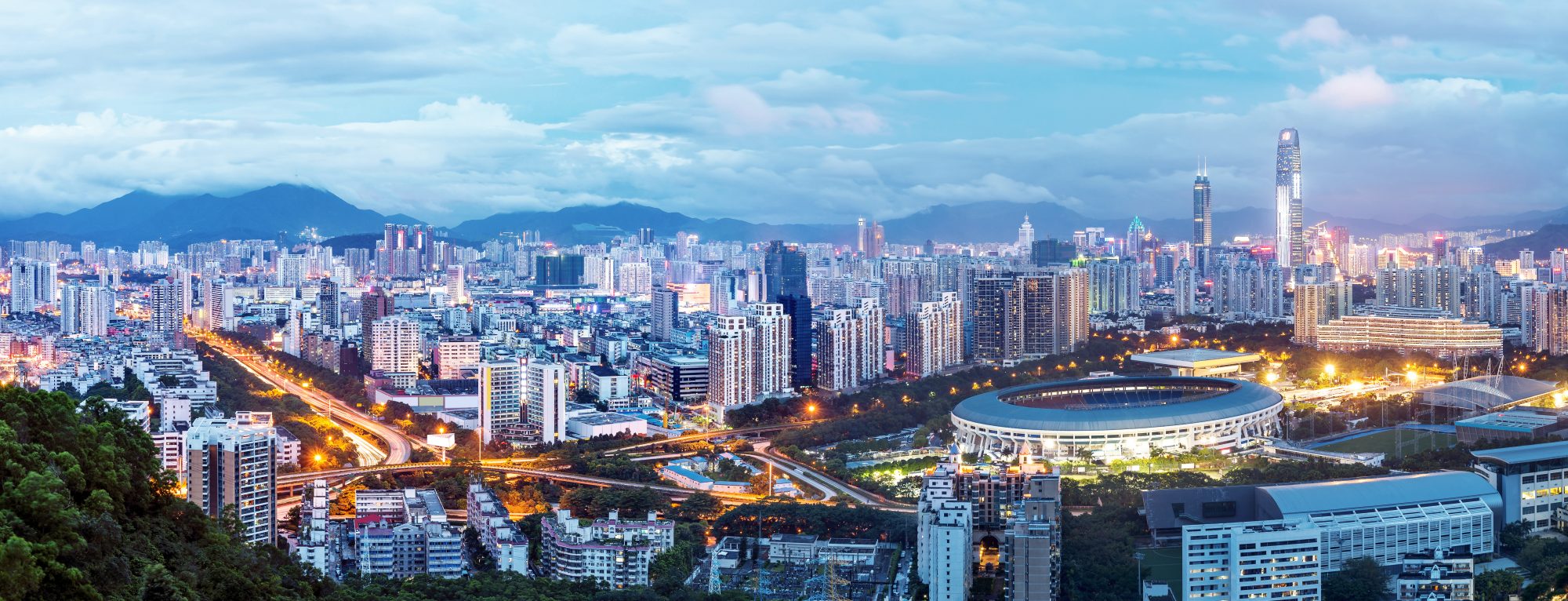
The creation of a city practically out of thin air is one of China’s greatest success stories, but it also has a darker side to it. As the city grew uncontrollably, impulses to reach economic gains often outweighed the interests of the general public. This tragically came to light during Shenzhen’s 2015 landslide that killed 73 people and tore down a large number of buildings. This landslide, however, was not a natural disaster. The sliding mountain that ripped apart infrastructure and crushed people was made up of illegally disposed waste; a result of Shenzhen’s boundless construction craze. People simply built faster than the resulting waste could be legally disposed of.
Urban villages have emerged in between newly built skyscrapers, where the poor live in crammed buildings. Due to a lack of regulation, landowners try to make use of every inch of space to construct low-cost, high-profit flats that are rented out to students and workers that cannot afford any other accommodation in the city. The existence of these unregulated areas stems mostly from China’s hukou system that categorises every citizen as either rural or urban, thereby dictating where they are allowed to live. In the case of Shenzhen, where adjoining farmland is structurally swallowed up by citiesthe city, it means that such an area still counts as rural. The orginal population that also owns the land, is barred from selling it, so they cheaply develop it into residential buildings to rent out to instreaming workers. As there is no overarching plan for the development of these areas, they are tightly packed with residential blocks, leaving only minimal space for basic infrastructure. This results in claustrophobic, dark and unpleasant places, which are nevertheless the only realistic option for low-income labourers living in Shenzhen. The impressive skyscrapers around the city are only there to be admired from a distance by Shenzhen commoners, as only wealthy foreigners and businesspeople have the necessary funds to live in them.
Urban villages and tall buildings
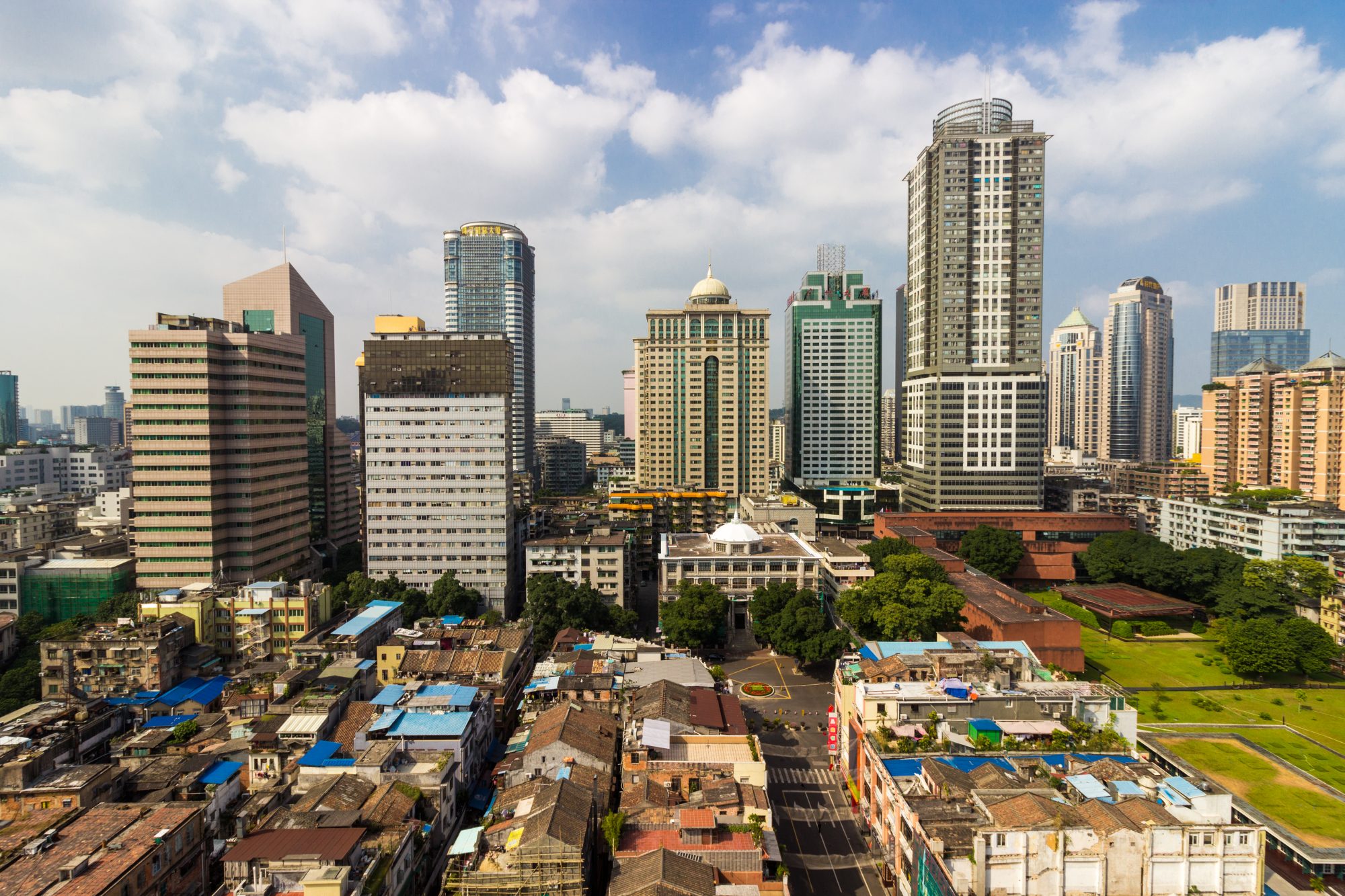
Urban villages also provide dorms as a means of living for the poorest of Shenzhen. These dorms, which are often in very lacking state, give shelter to the working poor that come to the city for a period, only to travel back home for hours at a time to see their families. They often live in very tough conditions, packed together in one room with other people sharing their fate. Many of them live there without any documentation, as strict migration rules forbid the Chinese population to move around freely. While this is a measure taken to prevent uncontrolled immigration into already overcrowded cities, its effects are humbling. Many Chinese move to the city nevertheless, only without residence permit, as illegal immigrants.
But as problematic as urban villages are, cities like Shenzhen cannot afford to just get rid of them. If accessible living in the city goes away, so do the masses of workers necessary to keep the city running. As the metropolis is dependent on the regular influx of new labourers, it is imperative for it to offer spaces for them to live. But Shenzhen is a city where people work, not where they live.
The biggest CCTV, surveillance camera producer in China
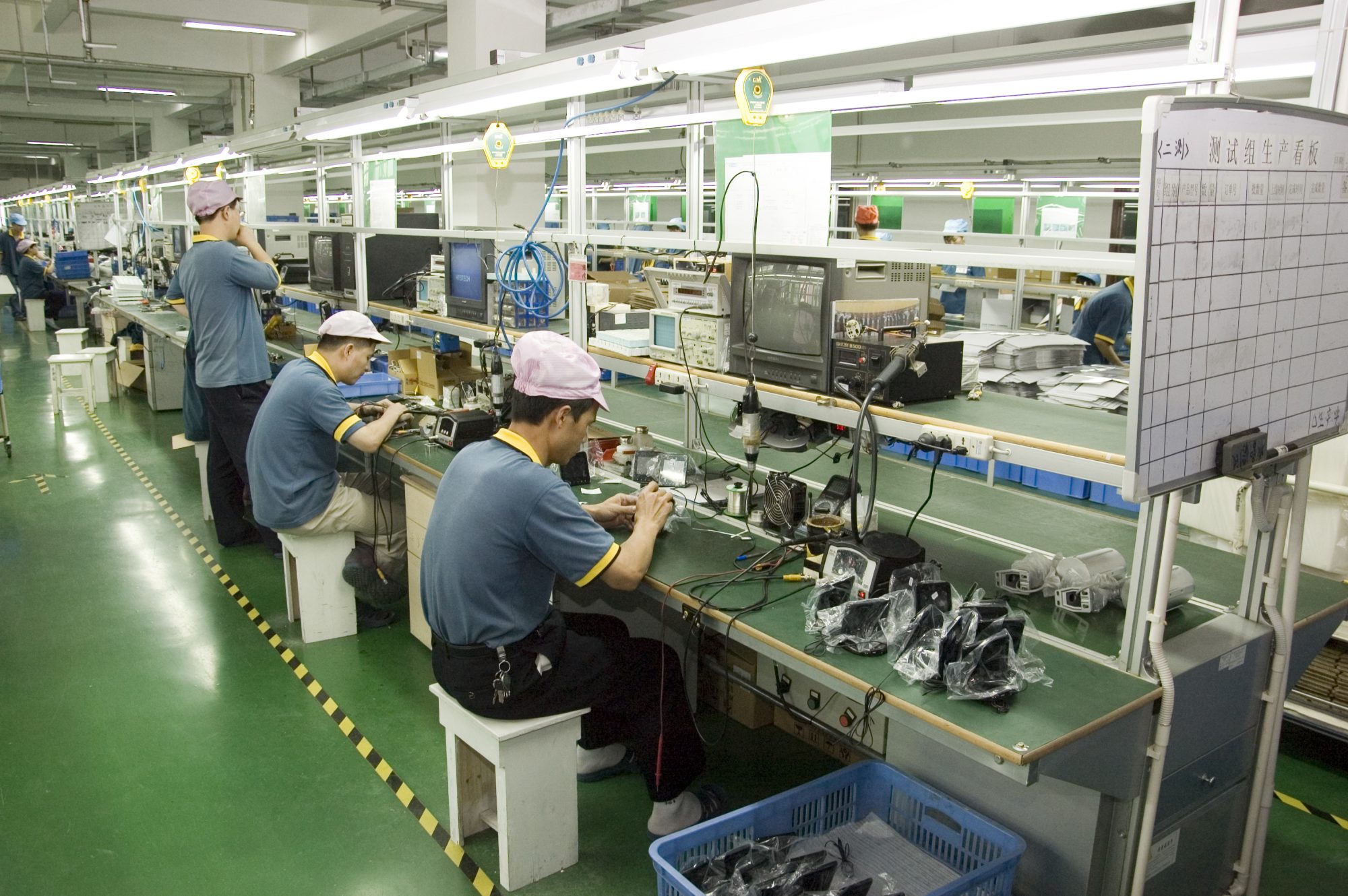
This shines through clearly in the numbers of the transient population. Of the twelve million people living in Shenzhen, only about three million do have permanent residence permits. The rest are people migrating to Shenzhen for set periods of time before returning back home. There are more than one million expatriates living in Shenzhen at any given time, but only about 30 000 of them stay for more than six months. The city has an immense hunger for manpower, which pulls workers towards it, but not the qualities for people to settle there.
Although Shenzhen has 8 metro lines and a vast net of roads at its disposal, transportation overload is a severe problem. Its inhabitants spend 44 additional minutes per day on the road, due to congestion. The number of car owners rises fast, but the infrastructure in place is not sufficient to support millions of cars, leading to frustrating and wasteful traffic jams.
When drivers finally reach their destination, the next problem arises: Free parking spaces are rare to come by. As the city was not built with so many cars in mind and due to a lack of strict parking enforcement, many people spend minutes every day circling a block while looking for an open spot. As there often are no consequences for illegal parking, many motorists just put their car wherever a space might open up, blocking bikelanes and sidewalks.
Beside the problem of making traffic work in the first place, Shenzheners also pay for their car dependency with severely polluted air. The phenomenon of smog in packed cities is far from a rare occurrence, but with the number of cars going nowhere but up as the new middle class of China grows, cities with explosive growth like Shenzhen are affected the most. As a result, the air quality index barely ever leaves unhealthy levels.
View of the Window of the World Theme Park
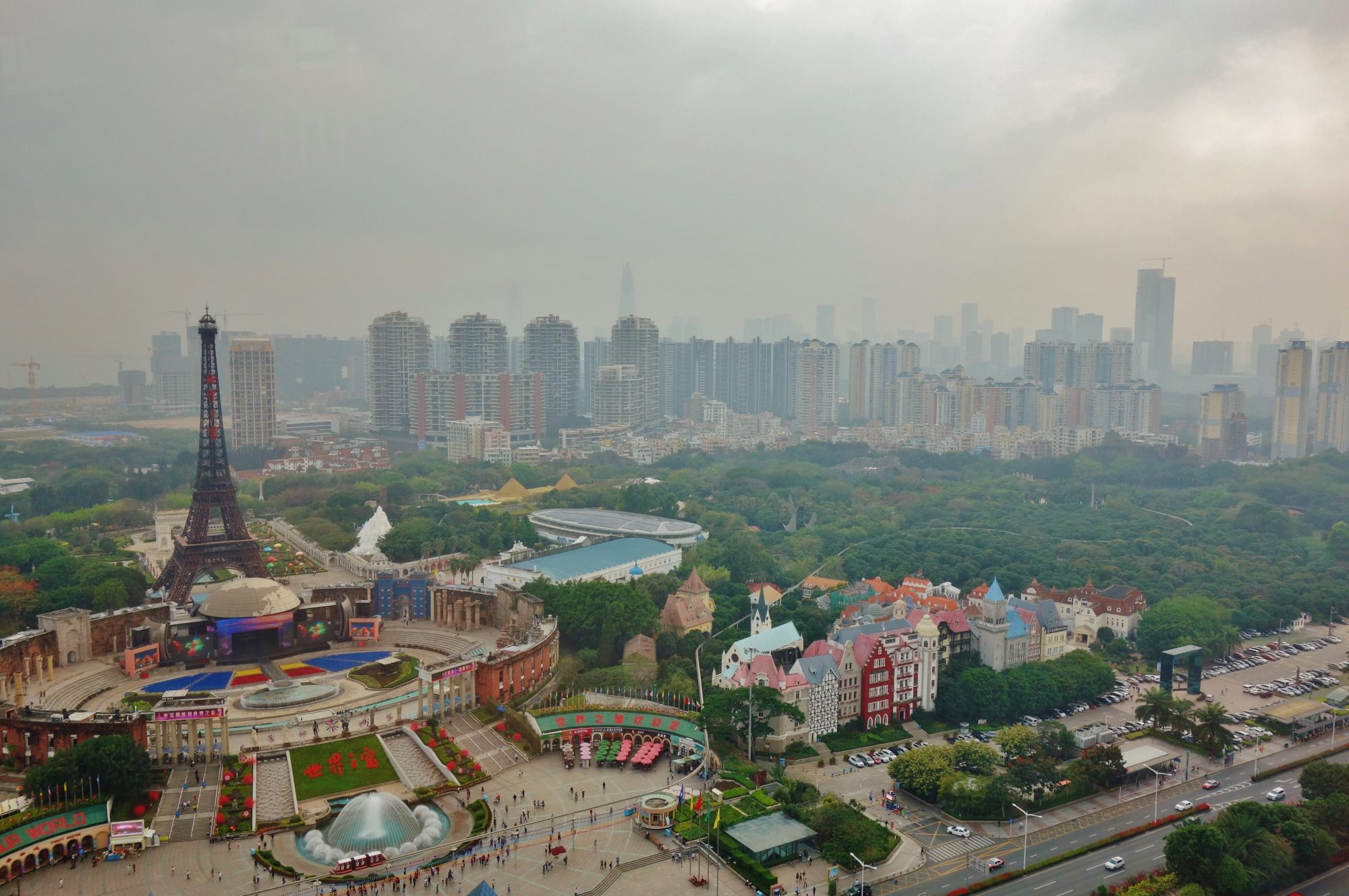
In general, planned or semi-planned cities always face serious issues in terms of their inclusiveness, infrastructure and housing. Cities like Shenzhen, whose growth is very much uncontrolled and unforeseeable, are much harder to supply with sufficient transport services and space to live.
Because of their fast growth, they do not offer a naturally growing middle class that binds the communities together. Low-income and high-income city dwellers live in separate spheres that barely touch each other. The fabric that makes up the living organism, which a city is, is missing.
The lack of viable accommodation is probably the biggest problem with uncontrolled city growth. When workers are very much willing to move to the city to have a shot at a better life but there is no adequate housing in place, workers are going to come anyway. Only, they will live in any place they can find and afford, be it crowded dorms or below-standard, low-rise residential blocks. Living under these inhumane conditions inevitably leads to a sick and miserable population.
The antidote to these problems is fairly simple. Instead of leaving the population to its fate, municipalities can actively control development and invest in infrastructure, so people get the conditions they want and need for a reasonable quality of life. Regulations for buildings, sewage, streets, housing and many other things need to be set into place and strictly enforced so that cities don’t turn into gargantuan beasts that burden their inhabitants.
One step in the right direction is solving the chaotic parking situation in Chinese cities. In Shenzhen, an international team of experts created a concept that is poised to do away with cars circling blocks in order to find a free parking spot. In this concept, roadside parking, which until then was completely free, is fee-based to make the masses looking for a roadside spot manageable and collect funds to expand parking supply. The fees should also motivate the population to use public transportation more often, leading to less burden on the traffic system and the parking situation.
Traffic jam at rush hour on a busy street of Shenzhen
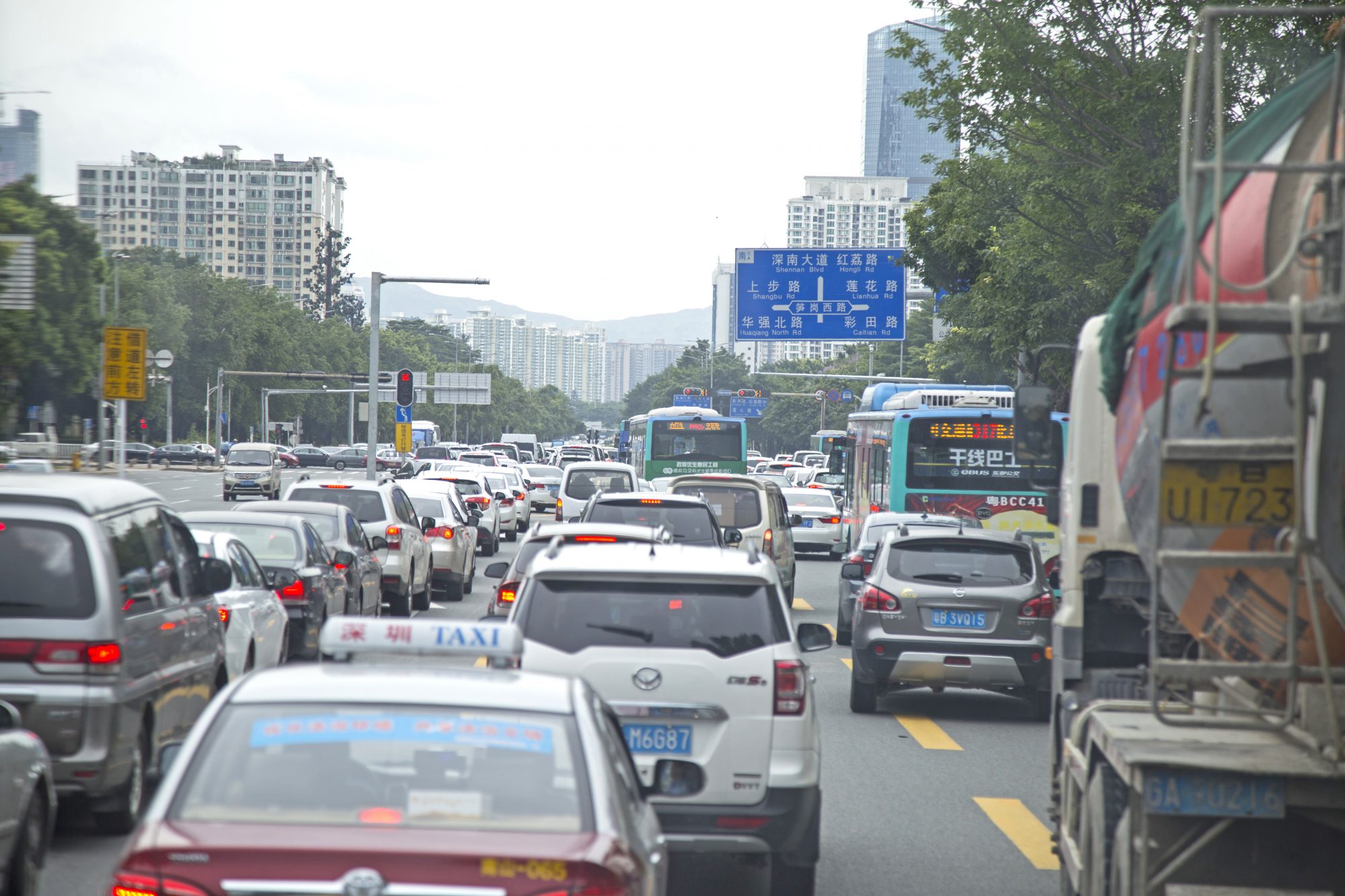
Fast growing, planned cities can work if they follow a well thought-out, feasible plan that doesn’t aim for a showpiece, but a real, well-functioning city, where every part falls right into place. The opportunity to build on cheap, uninhabited land can significantly lower initial costs and allow the implementation of infrastructure in one go. Many older cities are plagued by the problem of outdated buildings and infrastructure, both of which are costly to retrofit and renovate. In a planned city, basic infrastructure can be installed much more cheaply and quickly, and in a way that makes it easier to upgrade or alter them later on.
But Shenzhen is only the beginning. Today, fast-growing megacities are springing up in many developing countries around the world, not all of them are following a clear vision. As the city dwelling population becomes ever larger, it is essential to concisely plan beforehand, so that those millions have a chance at a high quality of life in the midst of a vibrant metropolis.

